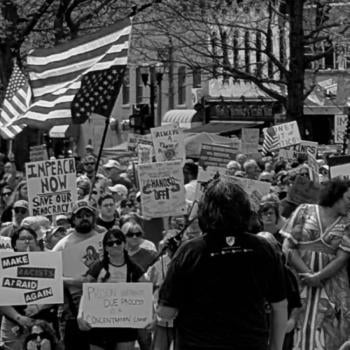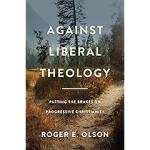The emergence of Christianity in the first and second centuries of the Common Era played a crucial role in the shaping of the monster in western Europe. By the second century, the concept of the devil as the enemy of God and the human race coalesced with Hebrew imagery of "the serpent in the garden." This tightly packed symbolic construction gave the Christian Church a head full of serpents, a monstrous brood that provided a wealth of demonic symbols. The description, for example, of the great dragon of Revelation chapter 12, identified with the devil, became paradigm for the west's imagining of everything from sea monsters to the king of the vampires (Dracula means, after all, "son of the Dragon").6
The medieval world born out of the ruins of Rome became a world of monsters that shared some of the same contradictory impulses of earlier mythologies. In Anglo-Saxon England, medievalist Jeffrey J. Cohen points out legends told of monsters building great houses of stone. In this context of legendary belief, mysterious ruins or rock formations came to be described as "the work of giants." In Anglo-Saxon England, the monster appears as Grendel in the Beowulf saga, a loathsome creature that tears down the doors of the house and cannibalizes everyone inside. In the medieval mind, the monster appeared as both creator of order and threat to order, a bundle of contradictions that borrowed from Christian images of Satan (both Angel of Light and Prince of Darkness) and from the old Norse cosmogonies in which the original great giant Ymir provided his own body for the foundation of the world, his bones becoming the hills, his flesh becoming dirt, and his skull transformed into the sky. The monster terrified, and yet human beings actually lived within his remains.7
Increasingly, the many monsters of the Latin Christian West represented composites of images of Satan, biblical monsters and the creatures from the folklore of pre-Christian Europe. Folklore about the nature of the devil and his work in the world naturally gave rise to stories of other terrible beings opposed to God and humanity. As historian Jeffrey Burton Russell describes this process in his multi-volume history of the devil in the western world, "the folkloric Devil shades off into other concepts such as the Antichrist, giants, dragons, ghosts, monsters, were animals and 'the little people.'" The process could work the other way as well, with the devil absorbing the myths and legends of pre-Christian monsters. In some parts of Europe, Satan took over the attributes of giants, and unusual geological formations became a house of the devil. Russell points out that this idea persists even into American cultural history with the tendency to name irregular rock formations or mountains "the Devil's Tower" or "Devil Mountain."8
Medieval speculation about the nature of monsters ran the gamut from a simple identification of them as accomplices of Satan to somewhat more sophisticated speculation about their place in relation to humanity and the larger divine design. Medieval scholars' mental maps of the world featured monstrous races of giants, wild apes, and dog-headed men. Christian scholars sometimes speculated that these creatures represented the progeny of Cain, cursed by God for slaying his brother (Grendel, Beowulf's monstrous opponent in the Anglo-Saxon epic, is said to be of the lineage of Cain). Occasionally, glimpses of a more nuanced view of monstrosity can be seen. One minor tradition in the middle ages portrayed St. Christopher as a Cynocephalus or "dog-headed." Scholars in the medieval world debated whether or not monsters had souls, and thus whether, hypothetically, they could receive baptism.9
Most of the monsters that rose from the grave in modern America have their distant origins in this context of medieval folklore, legend, and literature. Europeans had portrayed the witch, the vampire, and the werewolf, unlike many of the fantastical creatures located in other climes, as accomplices of Satan. The witch had a clear relationship with the devil, drawing her power from a pact she had made with him. The vampire in eastern Europe and parts of Germany had some relationship with Satan but also drew on beliefs about revenants and the consequences of a "bad death." Werewolves, and shapeshifters of all kinds, have a more complicated history, at times being portrayed as guiltless figures who labor under a curse (much like Larry Talbot in Universal pictures 1941 The Wolfman). Other versions of the werewolf mythos represent them as satanic creatures whose power, like that of the witch, comes from hell. Belief in these creatures assumed that no strict separation of "nature" and "supernature" existed, and that a world of shadows periodically and terrifyingly haunted humanity.10
The sixteenth and seventeenth centuries saw the birth of a new worldview. The "scientific revolution" introduced the notion of the universe as a mechanism rather than a playground for divine and demonic spirits. Kepler, Copernicus, and Galileo challenged the domination of Aristotelian cosmology that placed the earth at the center of the known universe. A new mechanical conception of nature began to shape thinking about the world, suggesting that observable, repeatable laws governed everything from the behavior of heavenly bodies to the phenomenon of human bodies. Neither miracles nor monsters would seem to have much of a foothold in this reimagined cosmos.




